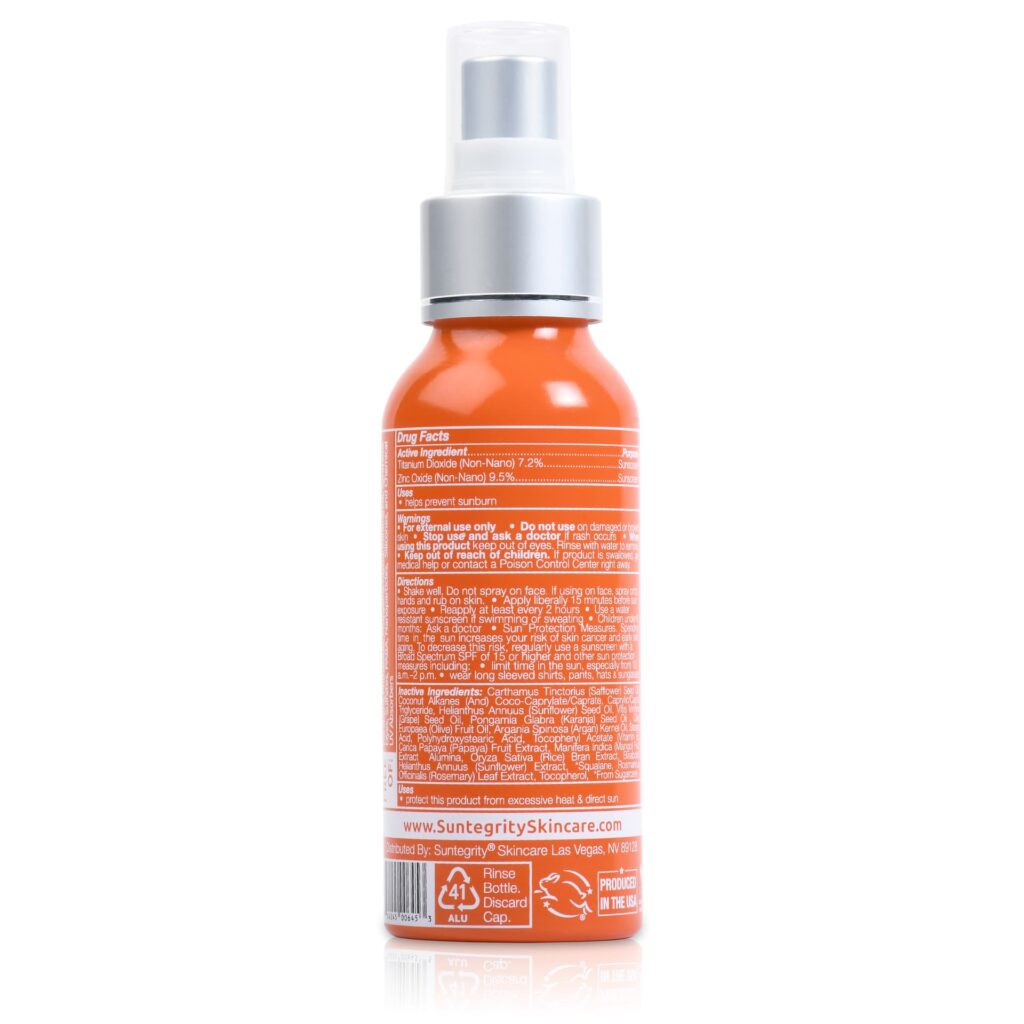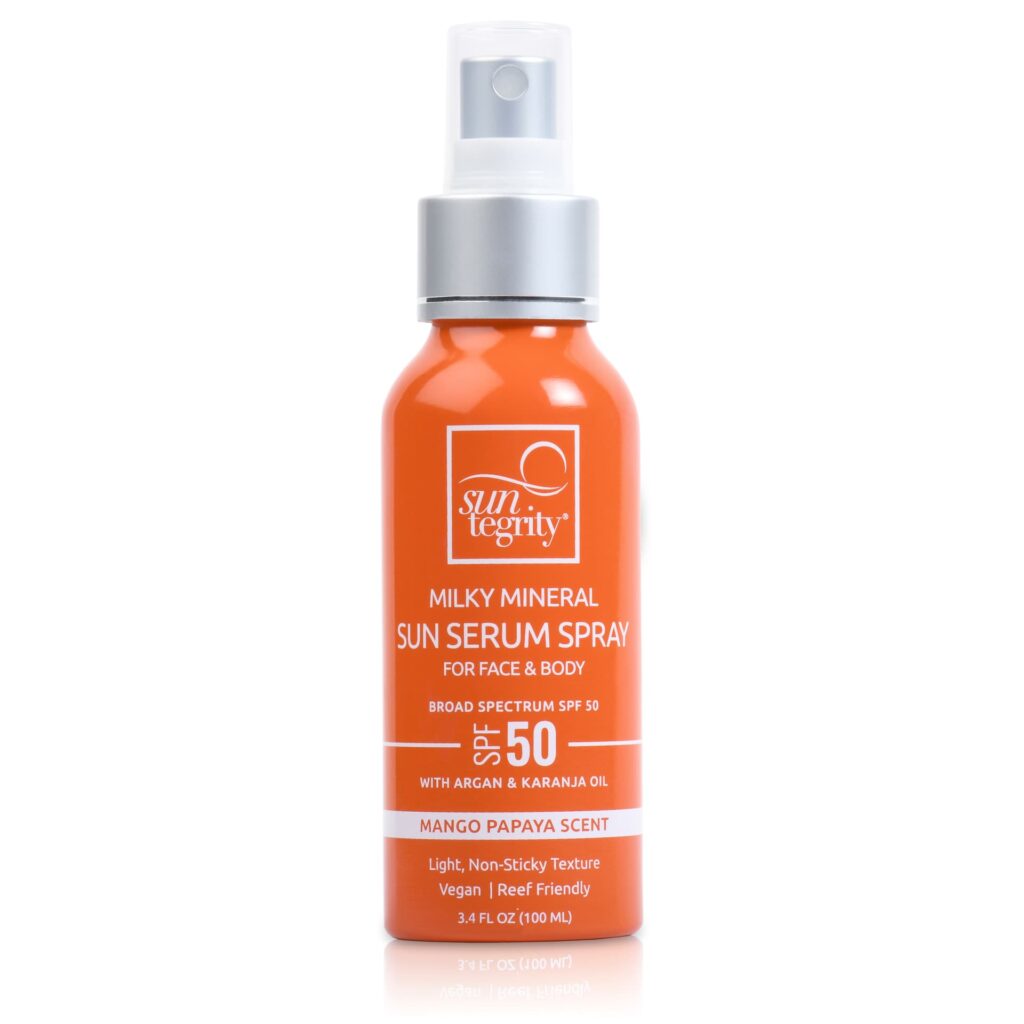What's In Your Sunscreen?

With the arrival of sunny weather, comes the long-awaited opportunity for us to head outside and play. There are so many outdoor activities beckoning us to get out and enjoy the comforting rays of sunshine. Perhaps we know before we head out, to reach for a sun hat, cover up, and sunscreen. But do we know the importance of the ingredients in our sunscreen- both for human health and the health of the planet?
UV Filter Categories
First, we must understand that the “active ingredients” in sunscreen fall into two distinct categories. Those being Mineral and Chemical. Or insoluble and soluble. These active ingredients are the ones providing the sun protection or UV filtering. In fact, in the US, the FDA classifies sunscreen as a drug. [1] This being because it has a performative “claim” for the product. The “inactive ingredients” include things like emulsifiers, emollients, sensory enhancers and preservatives. Both active and inactive ingredients are of importance, but for the sake of this article we’ll focus on the active sunscreen components. Below an example of how the label looks on a mineral sunscreen by Suntegrity.

Chemical Sunscreens
Chemical sunscreens work by absorbing UV radiation and converting it into heat. Some examples of active chemical sunscreen ingredients are: avobenzone, oxybenzone, and octinoxate. Consumers gravitate towards these chemical-based sunscreens for their ease of use and quick absorption. This absorption is part of why their safety is called into question. Studies have shown that these chemicals absorb (and remain) in the bloodstream for longer than the FDA has determined safe. [2] These chemicals have also shown to accumulate in marine life and are damaging the world’s coral reefs. Hawaii is leading the charge and passed a legislative bill in 2018, banning two chemicals: oxybenzone and octinoxate. [3]
Fortunately, use of those two ingredients in formulations has reduced. But several other chemical sunscreen ingredients have cropped up in their place. As of now, the FDA states that insufficient data has been established to prove safety of use. [4] Additionally, most of these ingredients have shown to have hormone disruption and organ toxicity. [5] These include:
- Cinoxate
- Dioxybenzone
- Ensulizole
- Homosalate
- Meradimate
- Octinoxate
- Octisalate
- Octocrylene
- Padimate O
- Sulisobenzone
- Oxybenzone
- Avobenzone
Spray Sunscreen
Have you ever sprayed yourself down with your favorite aerosol sunblock- and not waited the recommended thirty minutes to get in the water? If so, you’re certainly not alone! But additionally, in doing so, you’ve likely noticed a rainbow sheen of chemicals now splayed across the surface of the water? That would be the petrochemicals. Like gasoline in a mud puddle.
These aerosols contain ingredient “propellants” to launch the product out of the can. These are liquidized gasses that are petroleum-distillates such as: propane, butane, isobutane, and hydrocarbon. You may or may not have heard of the major recall last year, of certain name-brand aerosol products. Many were found to be contaminated with the carcinogenic chemical Benzene. [6]
Mineral Sunscreen
Mineral Sunscreen ingredients are also commonly referred to as physical sunscreen. Their effectiveness lies in creating a physical barrier on the skin that reflects UV rays. The active ingredients are Zinc Oxide and Titanium Dioxide. In fact, these two ingredients are the only two that the FDA currently deems as safe for use. [7] Now if Titanium Dioxide makes you think of a lifeguard in the 80’s with an opaque white stripe across their nose… think again! Formulations have come a long way since then, increasing spreadability and absorption. This brings up the next topic of particle size; nano vs non-nano. Nano particles are super-micro sized and have shown to accumulate in the environment. It is generally regarded as more eco-friendly to use non-nano zinc oxide.
Such as this mineral sunscreen:

“Reef-Safe”?
It should be noted that another unregulated marketing term is “Reef-Safe”. Companies will use this green-washing term to allude that their product excludes all chemicals that pose harm. Currently, only non-nano mineral sunscreens have proven harmless to marine systems. According to Haereticus Environmental Laboratory, or HEL; the non exhaustive list of environmental offenders are as follows: [8]
- Any form of microplastic sphere or beads
- Any nanoparticles like zinc oxide or titanium dioxide
- Oxybenzone
- Octinoxate
- Octocrylene
- Para-aminobenzoic acid (PABA)
- All Parabens
- Triclosan
- Homosalate
- Octisalate
It should also be noted that it’s not just the reef’s affected, but also freshwater streams and rivers too!
In Conclusion
As the data stands now, we just don’t know enough about all the chemical sunscreen ingredients that have cropped up on the market. The instant gratification and ease of the chemical propellant sprays is alluring, but at what cost? I propose a shift in consumer behavior and expectation. Where we come to expect to rub in our sunscreen a bit more. Or perhaps a slight white cast on the skin is a sign of mindfulness vs an inconvenience. Let’s celebrate a world where a bodacious strip of white across the nose is cool again.
Featured in this blog is Suntegrity Mineral Sunscreen. We selected this line for it’s intentional ingredients.
References:
[2] https://jamanetwork.com/journals/jama/fullarticle/2759002
[3] https://savethereef.org/about-reef-save-sunscreen.html
[4] https://www.fda.gov/media/124654/download
[5] https://www.ewg.org/sunscreen/report/the-trouble-with-sunscreen-chemicals/
[6] https://www.consumerreports.org/toxic-chemical
[7] https://www.fda.gov/media/124654/download
[8] https://haereticus-lab.org/protect-land-sea-certification-3/

Sign up for our newsletter!
Join to get the Haskill Newsletter and be the first to learn about new products, events, and other goings-on at Haskill Creek!









